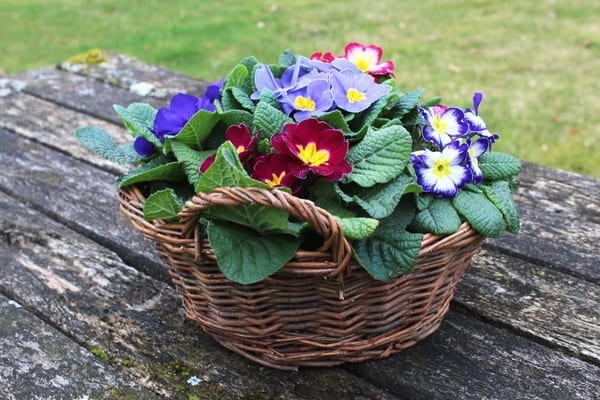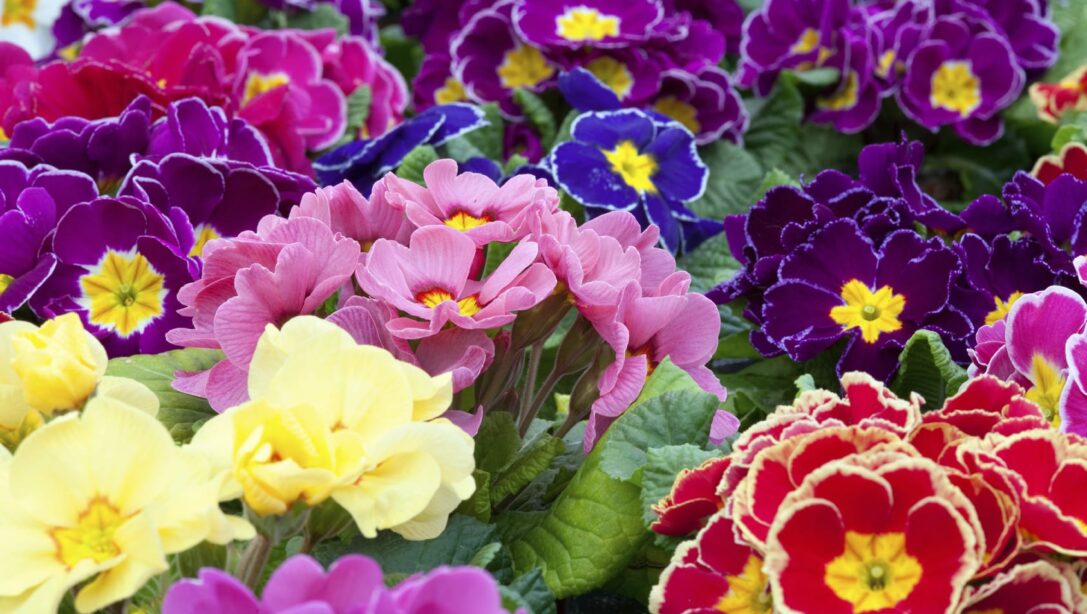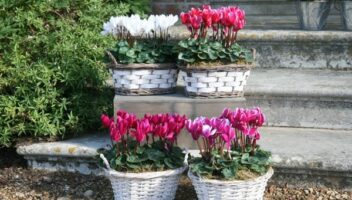As one of the most familiar signs of spring, primroses (or primula as they are also known) bring a sign of early cheer to the garden. Primroses flower reliably from January through to May and are one of the most attractive native wildflowers in Britain. These easy-to-grow perennials provide a beautiful carpet of colour in a variety of forms and sizes to make an attractive feature of any area, from pots to borders and everything in between!
Primrose Varieties
Primula vulgaris
Found in the wild, particularly in hedgerows, the vulgaris is the most common variety of primula. It produces an abundance of pale delicate yellow flowers, with a deep yellow centre. Its flowers form in a rosette of simple leaves sitting among its foliage. Fantastic for early pollinators, it is sure to attract bees, butterflies and other insects to your garden.
Primrose Factfile

Flowering time: From early January through to mid-May.
Sun Requirements: Partial shade – position in a cool, shaded area. They can happily grow in full sun providing the soil is reliably moist.
Soil: The primula likes to be reminded of its wild heritage so prefers moist, damp, acidic conditions that are native to woodland terrain and hedgerows. A heavy, clay soil is recommended, but they will generally tolerate a range of soils.
Hardiness: Hardy and adaptable.
Eventual size (height x width): Typically spreads to form a low carpet, around 20cm by 35cm.
Primrose Growing Guide
Planting
Plant primroses in early autumn to allow for establishment before a going dormant for a period. You can also find them in Garden Centres from late winter for instant impact. Plant them 6 to 12 inches apart and 4 to 6 inches deep.
Watering
Primroses thrive in damp conditions so water them thoroughly after planting and continue to do so throughout the season. Add a mulch to encourage moisture retention.
Pruning
Primroses are very easy to care for. Simple pruning, with deadheading as needed, will suffice. Cut them back in late autumn, when the foliage has died, to encourage maximum growth in spring.
Feeding
You can feed primula with low nitrogen fertilizer when they start to bloom. However, for a natural alternative that reminds the plant of its woodland roots, a simple leaf mould is always effective.
Primrose Planting Ideas
 As part-shade lovers, primulas are fantastic when planted underneath shrubs and trees. They are also very adaptable and good at acclimatising, so will tolerate a cool sunny spot too.
As part-shade lovers, primulas are fantastic when planted underneath shrubs and trees. They are also very adaptable and good at acclimatising, so will tolerate a cool sunny spot too.
Primulas fit perfectly with naturalistic planting schemes such as cottage gardens, rock gardens or wildflower meadows. Not that primulas are anti-social, but they look fantastic simply planted in big groups of mixed colours. They are available in a variety of colours, forms and sizes and look great planted in clusters.
If you prefer a mixed border, primroses grow well with narcissi (daffodils), which have a similar flowering time. Or, to introduce more colour and fragrance, they look stunning with viola adorate (‘Sweet violet’) which is a small but strongly scented blue flower that grows in similar woodland conditions to the primula.
Primrose Fact
The name ‘Primrose’ derives from the Latin for ‘first rose’, although it does not belong to the rose family.





